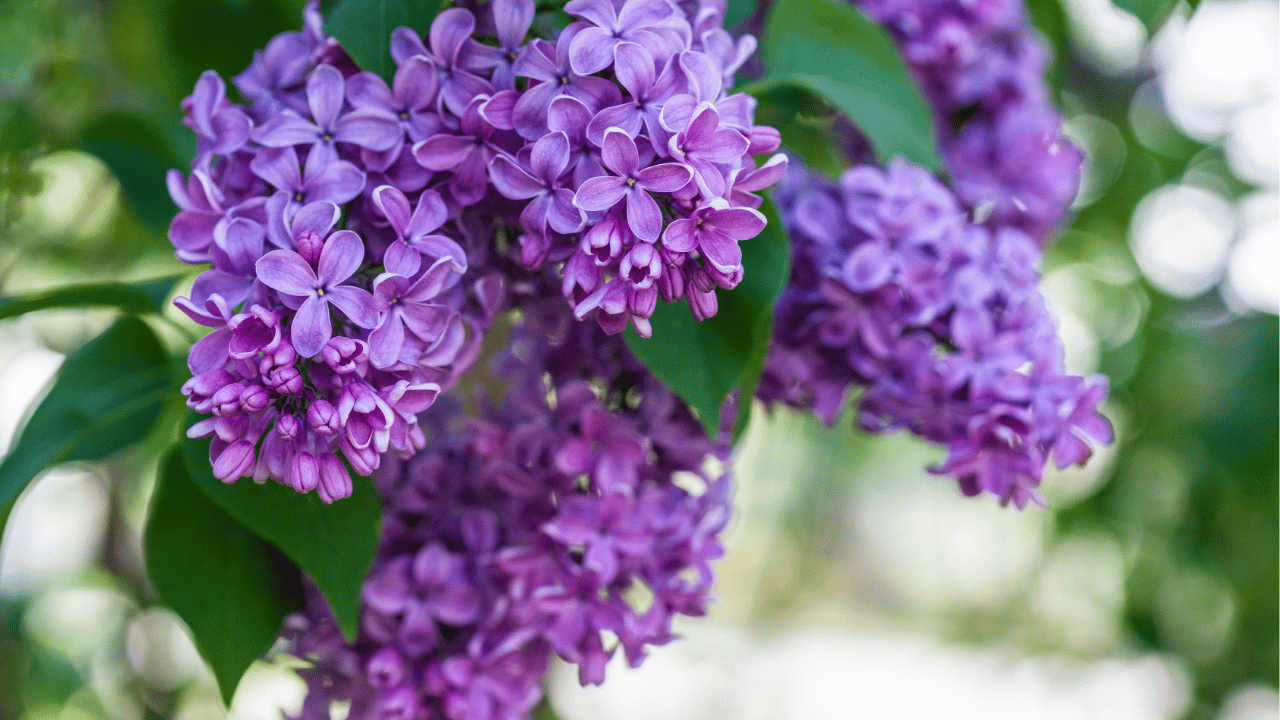Lilacs are cherished for their aromatic clusters and vibrant colors, but growing them requires careful attention to detail. With the right care, these hardy shrubs can thrive for years, producing stunning blooms and enhancing any garden. Here are ten essential lilac care tips that will help you nurture these beautiful plants to their full potential.
1. Choose the Right Location
Lilacs thrive in areas with full sunlight, so it’s crucial to pick a spot where they will receive at least six hours of direct sunlight daily. Although they can survive in partial shade, too much shade results in fewer flowers, and the plant may become leggy.
Ensure the location has good air circulation, as lilacs are prone to fungal diseases if planted in stagnant, moist conditions. Avoid areas with poor drainage or low-lying spots where water tends to pool after rain.
2. Plant in Well-Drained Soil
Lilacs prefer slightly alkaline, well-drained soil. If your soil tends to hold water, consider amending it with organic matter like compost to improve drainage and prevent root rot. Lilacs won’t tolerate standing water, which can lead to a decline in plant health.
Conduct a soil test to ensure it is within the optimal pH range of 6.5 to 7.0. If your soil is too acidic, you can add lime to increase the pH. A well-prepared soil bed ensures strong root development and abundant blooms.
3. Water Deeply and Infrequently
Lilacs don’t need frequent watering, but when you do water, ensure it’s deep. Shallow, frequent watering can lead to weak roots. Watering once every 7 to 10 days is usually sufficient, though you may need to adjust based on rainfall and soil conditions.
During periods of drought, increase watering to prevent stress on the plant. Always water at the base of the plant to avoid wetting the foliage, which can encourage fungal issues.
4. Prune Regularly
Pruning lilacs is essential for encouraging new growth and maintaining shape. The best time to prune is immediately after the flowers fade in late spring, as pruning too late can remove next year’s flower buds. Start by removing any dead or damaged branches, and thin out old wood to encourage air circulation.
Each year, remove about a third of the oldest stems to keep the plant young and vigorous. Avoid over-pruning, as this can reduce flowering for the next season.
5. Deadhead Spent Blooms
After lilacs finish blooming, it’s beneficial to deadhead the spent flowers. This prevents the plant from putting energy into seed production, allowing it to focus on developing strong roots and new growth. Simply snip the faded flower clusters just above a pair of leaves.
While deadheading is not necessary for lilac health, it can encourage a neater appearance and potentially increase flower production in some varieties. It also helps to reduce self-seeding, keeping your lilac from spreading excessively.
6. Fertilize Sparingly
Lilacs don’t require heavy fertilization, and too much nitrogen can actually reduce blooming. In early spring, before the buds appear, apply a balanced, slow-release fertilizer or a small amount of bone meal. Avoid fertilizers high in nitrogen, which encourages leafy growth at the expense of flowers.
For established lilacs, a light feeding once a year is usually enough. If your lilac shows signs of nutrient deficiency (yellowing leaves, stunted growth), a soil test can guide you on which nutrients to add.
7. Mulch to Retain Moisture
A layer of organic mulch, such as shredded bark or compost, can help retain soil moisture, regulate temperature, and suppress weeds around the base of your lilac. Apply a 2-3 inch layer, but be sure to leave space around the base of the trunk to avoid moisture build-up and rot.
Mulching also provides nutrients to the soil as it decomposes, improving overall soil structure. Replace or replenish the mulch annually to ensure your lilac continues to benefit from its protective cover.
8. Protect from Pests
Lilacs are generally pest-resistant, but they can occasionally attract aphids, scale insects, or borers. Regularly inspect your plants for signs of pest activity, such as sticky residue or holes in the leaves. If you spot pests, use insecticidal soap or neem oil to treat the affected areas.
For severe infestations, consider introducing beneficial insects like ladybugs, which feed on aphids. Keep an eye on the plant’s health, as stressed lilacs are more susceptible to pest damage.
9. Avoid Overcrowding
Lilacs need room to breathe, so avoid overcrowding them with other plants. Crowding can restrict airflow, leading to fungal diseases and poor growth. Ideally, space lilacs at least 5-8 feet apart to allow them to grow to their full potential.
If planting in a hedge or mixed border, ensure that neighboring plants have similar light and water needs to reduce competition. Proper spacing also makes pruning and maintenance easier.
10. Provide Winter Protection
While lilacs are cold-hardy, young plants may benefit from some winter protection. Mulch the base heavily in late fall to insulate the roots, and consider wrapping the plant in burlap if you live in an area prone to harsh winter winds.
Once established, lilacs can handle freezing temperatures well, but protecting young plants ensures they don’t suffer winter damage. By the time spring arrives, your lilacs will be ready to reward you with their fragrant blooms.

